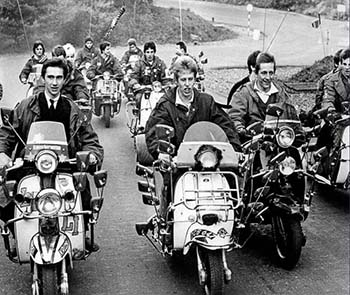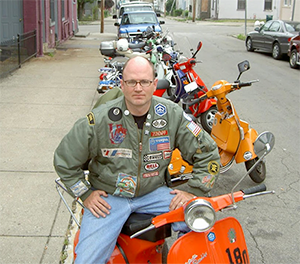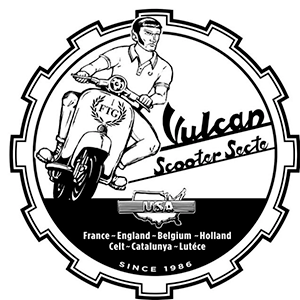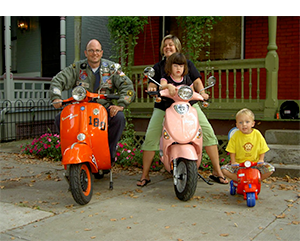Brief history of the Vespa and Douglas in England

A brief history of the Vespa and Douglas in England
Piaggio and The Vespa
1884
Piaggio is established in Genoa by 20 year old Rinaldo Piaggio as an extravagance transport building organization that ventured into creating rail carriages, vehicles, marine specialty and later flight.
1938
Enrico Piaggio and his sibling Armando acquired the family designing business on their dad’s demise in 1938. Enrico chose to move the business from airplane to bike creation after the finish of the conflict as there was a requirement for minimal expense transport.
This ended up being a judicious move as the organization would ultimately become one of the greatest makers of two-wheeled vehicles on the planet and truth be told The Piaggio bunch is presently Europe’s biggest producer of two-wheeled vehicles and the world’s fourth biggest cruiser producer by unit deals. The gathering own 7 organizations. Piaggio, Aprilia, Moto Guzzi, Derbi, Vespa, Gilera and Ligier.
1946
The Vespa was acquainted by Piaggio with the post The Second Great War Italian market. The 98cc bike was really created by Corradino D’Ascanio. Later this equivalent year the 125cc Vespa model was likewise presented.
1950’s
In 1950 Piaggio opened a processing plant in Germany and after a year in the UK (Douglas of Bristol). The Vespa was before long made in 13 nations and sold in 114!
In 1952 The European Vespa Club is established in Milan to unite the clubs of Italy, France, Germany, Switzerland, Holland and Belgium.
Albeit the Lambretta was beginning to acquire notoriety in the 50’s by 1956 Vespa had still sold more than 1 million vehicles.
1953
The Italian Government makes it compulsory for all vehicles over 50cc to have tags.
1960’s
Because of the MOD subculture that created during the 1960s, the Assembled Realm has turned into Vespa’s second-biggest worldwide market.
1970’s
In 1978 the Vespa PX is conceived.
1980’s
In 1984 Piaggio marks its 100th Commemoration and by 1988 deals had surpassed 10 million.
1990’s
Another way of life advanced from the UK mods of the 60’s and by the last part of the 80’s/90’s a great many ‘Scooterists’ went to public bike rallies held around the UK every year which proceed right up to the present day.
1996
At the point when Vespa commended its 50th commemoration in 1996, in excess of 15 million of the bikes had been sold around the world. Different organizations competed with Piaggio for piece of the pie, however none verged on imitating the achievement — or sentiment — of the Vespa.
2012
The Vespa Club of England have the esteemed Vespa World Days occasion at London’s O2 Field.
2016
The Vespa Club of England passes 3,000+ individuals. The most noteworthy enrollment since the mid 1960’s.
Douglas of Bristol
Douglas was an English cruiser maker from 1907 – 1957 situated in Kingswood, Bristol, claimed by the Douglas family, and particularly known for its on a level plane went against twin chamber motor bicycles and as producers of speedway machines.
1882
Siblings William and Edward Douglas established the Douglas Designing Organization in Bristol. At first accomplishing metal forger work, they advanced to foundry work, and afterward gained the level twin plan of W. J. Bargain, the organizer behind Light Engines Ltd. Bargain had created his most memorable single-chamber bike somewhere in the range of 1902 and 1904, and afterward a 200 cc flat twin called the Fair however the Light Engines Ltd. flopped in 1907 and was taken over by the Douglas family.
1907
The organization made and sold the main Douglas 350 cc adaptation of the flat twin motorbike.
1915
The motor was put lengthways in the edge with belt last drive, and electric lighting. During WWI Douglas was a significant cruiser provider, making around 70,000 bikes for military use.
1920’s
Douglas fabricated the principal plate slows down, and had an Illustrious Warrant for the stockpile of cruisers to the Rulers, Albert and Henry. Douglas cruisers additionally became well known in soil track hustling.
1935
They were in trouble and were taken over by BAC, Bond Airplane and Designing Organization. Bike creation went on into WWII and was reached out to generators.
1940’s
Not long after the conflict, Douglas was in trouble once more and diminished its result to the 350 cc level twin models.
The MD Claude McCormack got a quick look at a Vespa while on vacation in Italy and very quickly made plans with Piaggio to construct it under permit in the UK. A Piaggio fabricated machine previously showed up on the Douglas Stand at the cruiser Show at Barons Court in 1949 yet creation didn’t begin until April 1951.
1955
Battling again the 350 cc Douglas Dragonfly was the last model created. Westinghouse Brake and Sign purchased Douglas out and creation of Douglas Bikes finished in 1957.
1965
Vespa creation stopped with 126,230 units being finished. The organization then, at that point, chose to import Vespa’s as opposed to assembling them.
1982
Douglas stopped bringing Vespa bikes into the UK.



